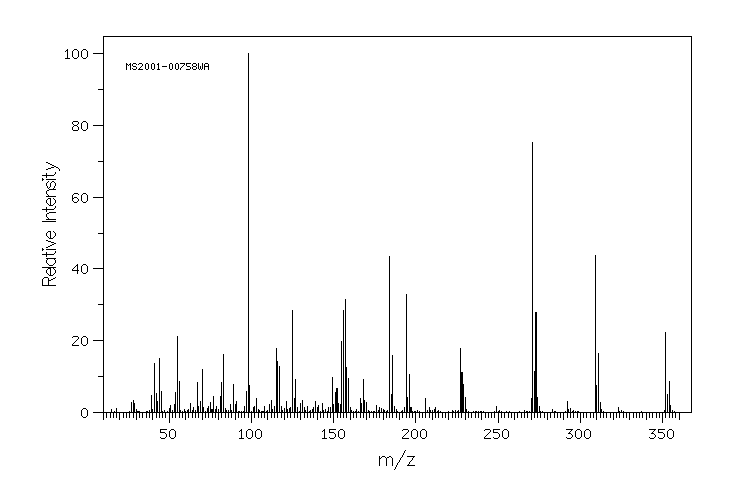代谢
三组各五只雄性和五只雌性的Fischer F344大鼠(10周龄)被给予单次口服剂量的[噻唑啉-5-(14)C]己噻唑(具体活性,6.6 mCi/mmol;纯度,> 99%)。三种不同的处理方案包括单次口服低剂量(10 mg/kg bw)、在十四次口服未标记己噻唑后单次口服低剂量以及单次口服高剂量(880 mg/kg bw)。低剂量相当于大约50 uCi/kg bw,高剂量大约为90 uCi/kg bw。低剂量的溶剂选择为二甲亚砜(DMSO),而高剂量的溶剂选择为橄榄油,因为己噻唑在DMSO中的溶解度有限。...来自这些研究的样本...被提取并分析代谢物。在低剂量组中,主要识别出的化合物是己噻唑,在尿液中约占给药放射活性的2%,在粪便中约占40%。提取到甲醇中的未识别化合物在尿液中的放射性约占80%,在粪便中的放射性约占30%。主要识别出的代谢反应是环己烷环的羟基化和酰胺-环己烷键的断裂。在低剂量组中,排泄物中的主要识别出的放射性标记代谢物是PT-1-8(顺式),占给药放射活性的8-12%。其余识别出的代谢物浓度较低(每个都小于给药放射活性的2%):PT-1-2、PT-1-3、PT-1-4、PT-1-8(反式)、PT-1-9、PT-1-10和PC-1-1。脂肪中的主要识别出的放射性标记成分是母化合物;肝脏和肾脏中的主要代谢物是PT-1-4。
Three groups of five male and five female Fischer F344 rats (age 10 weeks) rats were given a single oral dose of [thiazolidine-5-(14)C]hexythiazox (specific activity, 6.6 mCi/mmol; purity, > 99%). The three different treatment protocols included a single oral dose at a lower dose (10 mg/kg bw), a single oral dose at the lower dose after fourteen oral doses of unlabeled hexythiazox and a single oral dose at a higher dose (880 mg/kg bw). The lower dose equated to approximately 50 uCi/kg bw and the higher dose, approximately 90 uCi/kg bw. The vehicle chosen for administration of the lower dosedimethyl sulfoxide (DMSO), while the vehicle chosen for the higher dose was olive oil, because of the solubility limitations of hexythiazox in DMSO. ... Samples from /these/ studies ... were extracted and analyzed for metabolites. In the groups at the lower dose, the primary identified compound was hexythiazox, present in the urine at approximately 2% of the administered radioactivity and in feces at approximately 40% of the administered radioactivity. Unidentified compounds extracting into methanol represented approximately 80% of the radioactivity in urine and 30% of the fecal radioactivity. The primary, identified metabolic reactions were hydroxylation of the cyclohexane ring and cleavage of the amide-cyclohexane bond. The major identified radiolabelled metabolite in excreta was PT-1-8 (cis), which comprised 8-12% of the administered radioactivity in excreta in the groups at the lower dose. The remaining identified metabolites were present at low concentrations (each < 2% of the administered radioactivity): PT-1-2, PT-1-3, PT-1-4, PT-1-8 (trans), PT-1-9, PT-1-10 and PC-1-1. The major identified radiolabelled component in fat was the parent compound; the predominant metabolite in liver and kidney was PT-1-4.
来源:Hazardous Substances Data Bank (HSDB)








